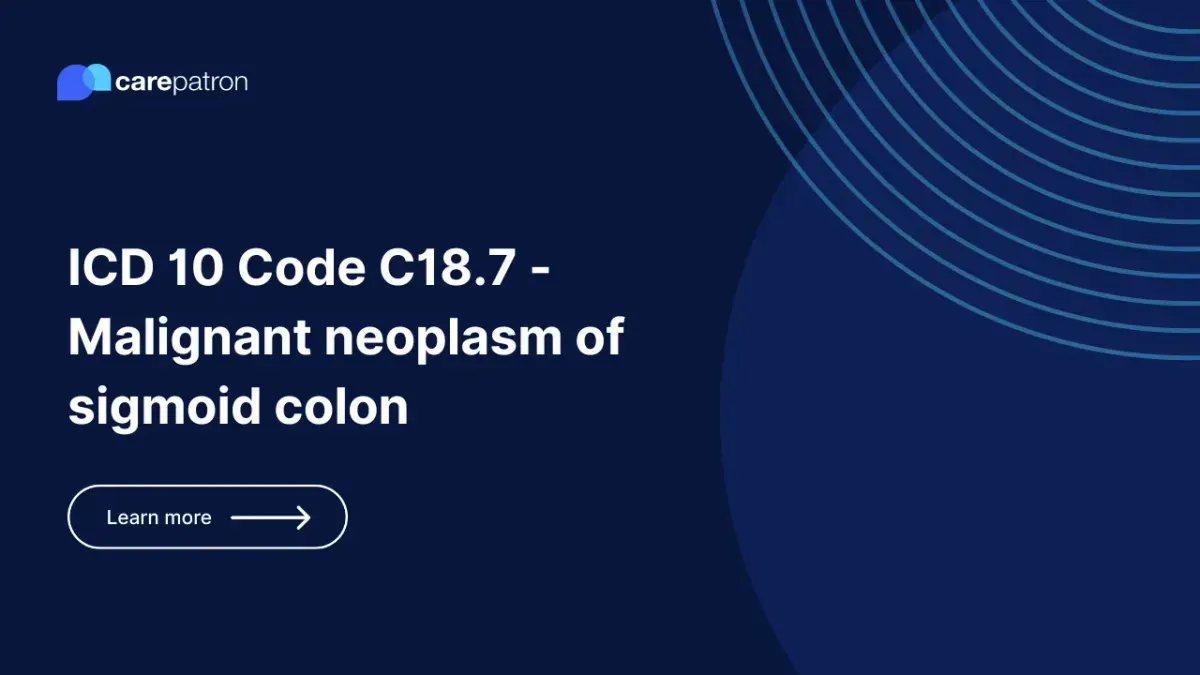
C18.7 – Malignant neoplasm of sigmoid colon | ICD-10-CM
C18.7 is an ICD-10-CM code used to diagnose malignant neoplasm sigmoid colon. Learn more about this code and how to use it in this comprehensive guide.
Use Code
EHR and practice management software
Get started for free
*No credit card required
Free
$0/usd
Unlimited clients
Telehealth
1GB of storage
Client portal text
Automated billing and online payments
